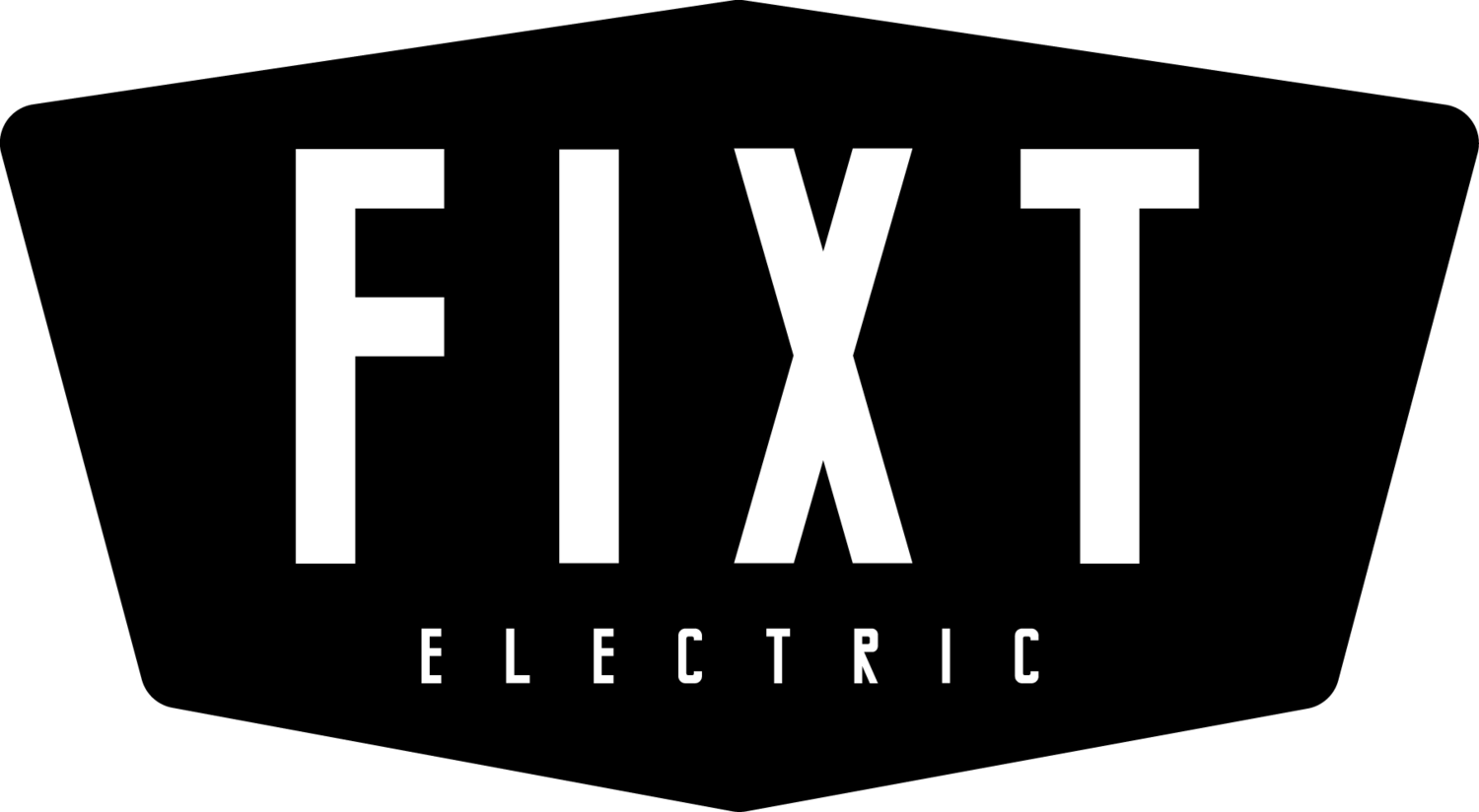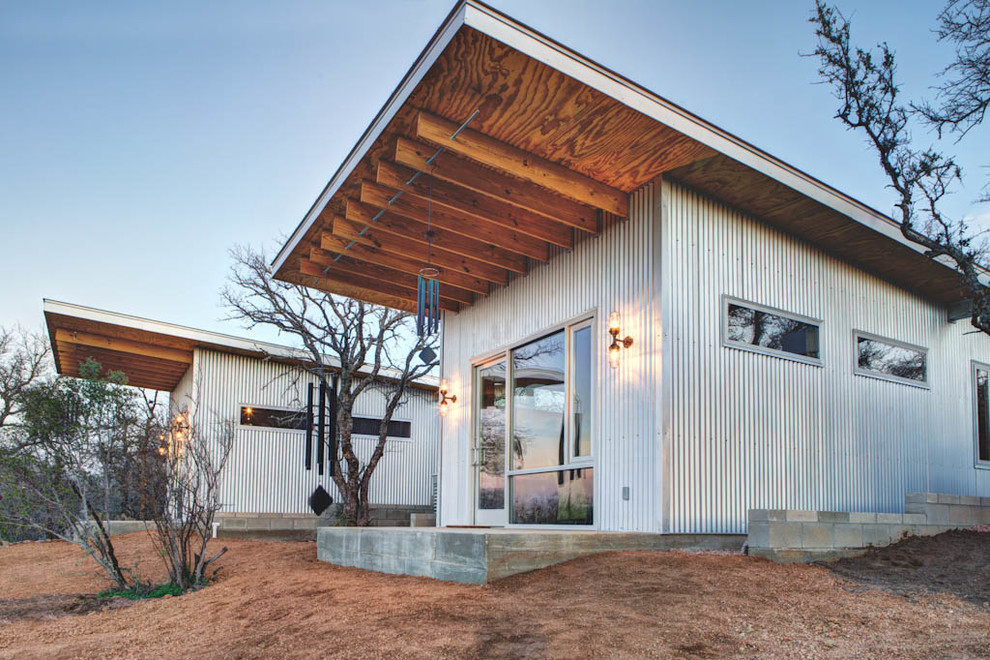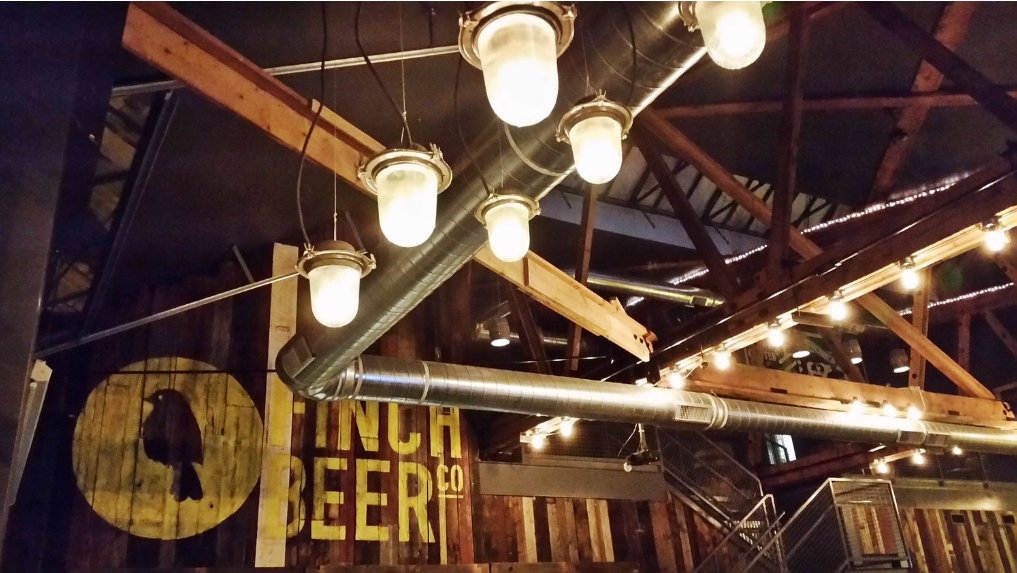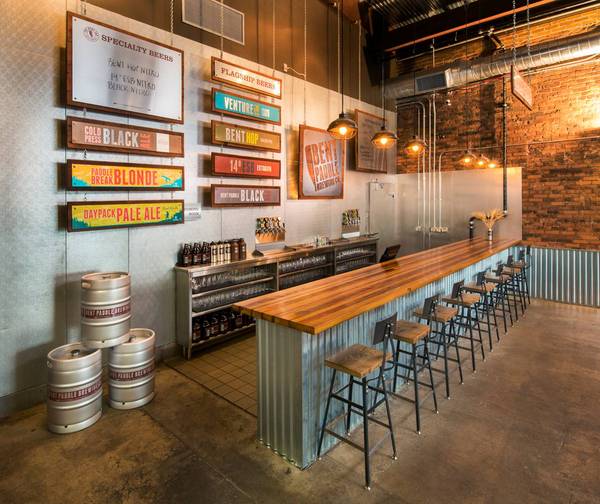Exterior Lighting: How to Do it Right
Our tips on illuminating exteriors to create practical, yet aesthetically-awesome, outdoor spaces.
When it comes to installing lighting for the great outdoors, you’re dealing with a totally unique beast: Mother Nature. You need to consider plants, trees, sunrises and sunsets, and other natural objects that may need deserve a focal point. Safety is also a concern, as you need to ensure your lights are installed correctly to avoid any issues or damage with water and moisture. Despite all these challenges, outdoor lighting can create a super relaxing ambiance to any exterior. Our tips on getting it right are below:
Choose a cool focal point. The best part about exterior design is the variety of focal points to choose from. Unlike interior spaces where the focal point may be more obvious (think art, or unique accent fixtures like shelving or a counter) outdoor focal points are more nuanced. Maybe you want to highlight a door, retail or restaurant signage, outdoor table seating, or a courtyard – regardless, picking a few things that need to be illuminated for aesthetic or practical purposes is a great place to start.
Nail down your type of light. While walkway lights and flood lights are common for outdoor lighting, spotlights and gooseneck lighting are another great option that work with a variety of bulbs. Our fixtures like the Mint Marshall mounted as a gooseneck sconce and the Burntside Bullet make for great spotlights and sign lights. Hang them under a pavilion or awning to create a cozy ambiance without flooding an entire outdoor space with light. Our fixtures also work with a variety of bulbs. Choosing the color temperature and brightness that works for your space is essential. Reminder to be aware of light pollution and energy efficiency. It never hurts to go with a low wattage bulb if possible.
Create different effects. While hidden lights can create a cool chic and modern effect, we love the idea of mixing hidden and apparent lighting fixtures in outdoor spaces. We carry a variety of sconces that make perfect framing for a door or window – making a unique industrial pairing with natural elements.
Install it right. Safety is the number one priority when installing outdoor lighting. This will ensure that the light doesn’t get damaged, or cause any harm to structures or other items around if it comes in contact with water or moisture. Choose a fixture that is meant to be used outside or is suitable for outdoor conditions. Keywords like “weatherproof,” or “weather resistant,” will give you a clue that they are safe. All of our light fixtures are UL Listed for dry and damp location. This includes- underneath an outdoor awning, pavilion, roof, or structure. Check out some of our favorites here.
Consider smart lighting. We obviously love vintage, refurbished fixtures, but that doesn’t mean we don’t love the latest technology. Timers, daylight sensors, occupancy sensors and event scheduling are all examples of tech that will help bring your lighting to the next level. Any type of light fixture (even our Soviet-era ones) simply has to be plugged in. The smart systems connected to the lamps are controlled via control panel in your space or an app. Whether you’re looking to add lighting to your commercial or residential exterior, these systems are extremely smart additions to consider.
Brewing Up Good Lighting
The craft beer industry is re-shaping commercial design — and with it comes a serious need for industrial lighting. Here’s a few ideas that will put any craft room in a good light.
The craft beer industry is re-shaping commercial design — and with it comes a serious need for industrial lighting. Here’s a few ideas that will put any craft room in a good light.
There are over 6,000 breweries in the U.S. and that number is supposed to keep climbing thanks to legislation like the Surly Law and simply because people really, really love beer. Thankfully, this also means great things for the commercial design industry — all of these new taprooms, cideries and brew pubs need a vibe that keep customers coming back for another cold one. Here are some tips on how lighting can play a key role in creating that perfect brewery aesthetic:
Old space in a new light. The best part about breweries is that they breathe new life in old spaces like warehouses and factories where many call home. These types of spaces pair perfectly with vintage lighting. Brick, exposed wood ceilings and vent systems look great with truly any type of lighting that has a more rustic or industrial vibe.
Check out our project, The Finch Kitchen, for example. This Chicago-based brewpub's exposed timber beams and reclaimed wood walls give way to its rustic and industrial vibe that worked great with our pendant lighting fixtures. The pendant lights also reflect a bit off the space’s venting system, creating more light in a room with plenty of awesome dark wood.
Pendants for the win. With the exposed beams and ceilings found in many breweries, pendant lights are a great way for lighting to “slip through the cracks” so to speak. You can more hang them more accurately over bars, tables or entries than other types of overhead lighting like track lighting that requires a finished ceiling. Plus, because some of the older warehouse-type spaces can easily have 10,000+ square feet, pendants provide sufficient light in a big space without giving off the alien-like, cold glow of some overhead fixtures.
We love this idea from Forbes Magazine — the pendants hang through the exposed beams, directly over a wooden bar to create moody, ambient lighting. For the same effect in your space, check out our Porcelain Panther pendant. They come in multiple colors and are based off of similar 1950s Czech warehouse pendants.
Make it moody. While we think the “alien-like glow” of some overhead lights should be avoided in any space (maybe with the exception of an operating room), breweries more so than most commercial spaces benefit from darker, more moody lighting. Drinking beer in a taproom has become an immersive experience, and lighting for that experience makes all the difference.
We suggest opting for warmer bulbs in our pendants for brewery spaces — it not only looks better with the wood, brick and metals commonly found in brewery design, it actually makes the beer look better too! While too warm light can tend to be a bit soporific, and make it harder to focus on specific tasks (hence cooler lighting in office spaces), we’re drinking beer here, so get warm lighting, hunker down and tap another cold one.
Bent Paddle Brewing, Superior, MN.
Meet the FIXT Owners: Taylor and Nate
What do they do when they’re not wiring up industrial light fixtures? And what exactly happened on their trip to Russia? FIXT Electric’s owner duo shares this and more in their first Q+A.
What do they do when they’re not wiring up industrial light fixtures? And what exactly happened on their trip to Russia? FIXT Electric’s owner duo shares this and more in their first Q+A.
Behind the hundreds of light fixtures at FIXT Electric Company, there’s just a few people salvaging, designing and re-wiring them all. Two of those people are Taylor Lorell and Nate Jackson, founders and co-owners of FIXT. Part-time traveling musicians and full-time small business owners, they give the lowdown on their love of Soviet-era lighting and what makes FIXT standout in the lighting industry.
Q: FIXT Electric is built on your shared passion for industrial lighting design and running your own small business – but you both took different paths to get here. Can you share a bit about your backgrounds?
Nate: I have a background in architectural salvage and was an antique buyer for many years before realizing I wanted to pursue a lighting business of my own. I’m also a musician, which is how I met Taylor.
Taylor: We met at open mic night 5 years ago and shortly after, started a band. While my education background is in arts management and entrepreneurial management, at the end of the day, we’re both musicians and just wanted to play music whenever and wherever we could. We were tired of working corporate jobs so we decided to start our own business.
Q: Nate, how did the idea for a lighting company come about?
N: While working in the architectural antique field, I saw that there was a demand for large quantities of vintage industrial lighting for commercial use. In the U.S., a large portion of the industrial lighting you see is the same everywhere, it’s highly picked over, and the wholesale pricing is through the roof. I wondered whether that was another country in the world that had the same type of industrialism as the United States. Russia popped into my head, and then the idea was born.
Q: What about Soviet-era/industrial lighting excited you both?
N: The light fixtures are different than anything you can find in the states. During the Soviet era, there were only a certain amount of paint colors used that played of the emotion of Soviet economic times. Red, the color of communism and the Soviet Union; Sapphire Blue, the beginning of the space race; Mint Green, Peach, Orange — agriculture and country life. In the U.S., you just don’t see these types of colors in industrial vintage lighting. American industrial lighting offers limited color options, consisting mainly of Army Green, white, and galvanized metal.
T: The other interesting thing about our light fixtures, is the impressive quality in which they were made. During the ‘50s and ‘60s Khrushchev was in competition with America and the West over who could produce the most. As a result, many light fixtures were over-engineered and will probably outlive us all.
Q: Share some details about your first trip to Russia to find lighting — how long did the planning take?
T: It took about a year to research the lighting. We poured through urban explorers’ blogs, zooming in on the pictures of abandoned buildings, factories, bomb shelters, etc., trying to get an idea of what Russian industrial lighting looked like. Once we saw how awesome and unique the light fixtures were, Nate and I decided to start a vintage furniture business called Fine-ass Furnishings, as a means to make money for our trip.
N: We traveled around the U.S. for over a year buying and selling Mid Century and industrial furniture, attending auctions, hosting pop-up shops and selling our goods at farmer’s markets — all while playing music on the road. Whatever we had to do to make money, we did it. One day we found a cheap flight to Russia and were due to leave three months later. We sold everything from the business, our personal belongings, got rid of our apartment, and took the plunge.
Q: What was the most exciting part about the trip?
T: We only had intentions of going to Russia to buy around 300 light fixtures to start a small, boutique business. When we arrived though, we found the mother load and ending up shipping back around 5,000 light fixtures. The fate of our future was about to change forever.
Q: What was the most frustrating?
N: Waiting for the lights to arrive took about two months. We both lost a lot of sleep during that time!
Q: What makes FIXT's lights special?
T: As far as we know, we have the largest inventory of Soviet Industrial lighting in the United States. If there’s a large project, or perhaps multiple locations of say, a fast casual restaurant, hotel, or coffee shop that want a similar vibe, we can facilitate that demand. These light fixtures are statement pieces, rich with history, and a wild story behind them.
Q: What individually do you bring to the table at FIXT? How do you balance each other out as business partners?
N: Taylor manages the forward-facing side of FIXT, including the look of the website, photography, and social media presence, while I handle the design and build of the light fixtures in the workshop. There are many times though where all hands are on deck and we’re both helping each other where we need to fill in the gaps.
Q: Can you give a sneak peek of your next lighting lines for FIXT?
T: We’ve got a couple ideas up our sleeves … we’re looking at branching into a residential market, while still fulfilling our commercial clients’ needs. Our future consists of offering unlimited quantities of lighting at an affordable cost. Mid Century and bohemian vibes are on our radar as well.
Check out some of FIXT’s projects and shop their current lighting lines.









